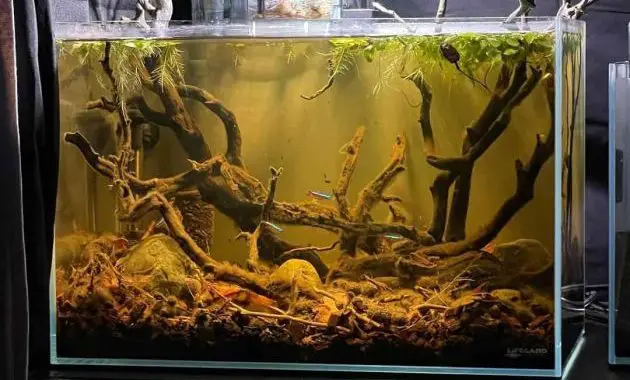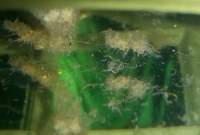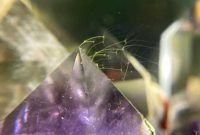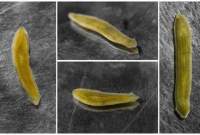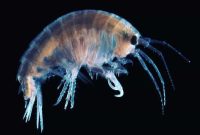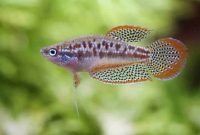COMPLETE Blackwater Fish Tank Setup Guide – How to blackwater (dark-colored water) be created in wild nature? It is caused by the large quantity of dissolved humic substances which dissolve into the water. It is made from decomposing of dead leaf litter and wood fall. This process creates humid substances and tannins, then tint the water a tea-stained brown color.
Blackwater rivers exist in some places in Venezuela, Brazil, and Indonesia. It usually runs through the swamps, flooded forests, deadwood, and peat accumulations. In Brazil, this stream type is called “igapó” or “root forest” and has become a home to over 200 tropical fish species.
This environment brought into the tank by the aquarists has become popular, which gives more challenges than most. Let’s dive into the fantastic blackwater fish tank world.
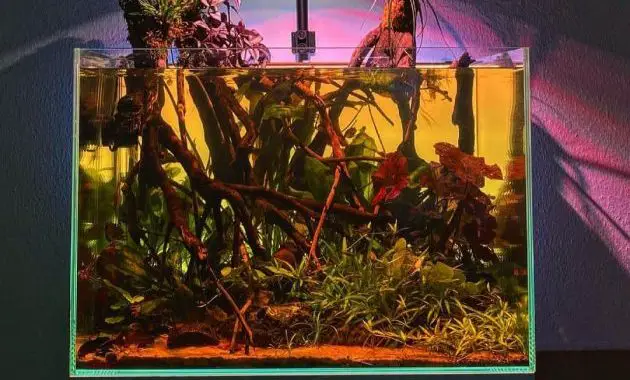
COMPLETE Blackwater Fish Tank Setup Guide
Create Blackwater Effects
Before you build a blackwater fish tank, think first about whether you want to construct an accurate biotope or no. After you do that, you can start selecting the materials to use. Be careful to choose the right fish and plants for it, ensure that they are the right inhabitant of your blackwater aquarium.
The tea-colored water in the blackwater aquarium is produced by placing dried plants parts such as leaves (cattapa, oak, almond leaves, magnolia, and more), driftwood, tree barks, and seed pods (like alder cones). You can also boil the dried leaves to make concentrates to boost the brown color of the water.

Cattapa or Indian almond leaves are the most used by fish keepers to get blackwater effects in the aquarium. The interesting fact about using dried leaf litter is that it does not pollute the water seriously.
The leaves that fallen naturally from the tree will not contain much substance which can decompose anymore because the tree has absorbed all nutrients that were once in there.
So, it means you can put the dried leaf litter in the tank until it has fully decomposed. The old leaves can be mixed with the new leaf; it will provide more biofilm and hiding places for timid blackwater creatures.
Read Also: Are Axolotls Good Pets For You? It’s A Complete Guide Of Keeping, Feeding, Behavior, Characteristics
How To Setup Blackwater Fish Tank
Choosing The Right Aquarium Size And Substrate For Blackwater Tank
A fun fact about the blackwater aquarium is that you can build it any size. The nano tank is actually easier to care for than the larger one because the larger tank requires many materials.
Many tiny blackwater fish species are very suitable for 5-gallon tank size. Of course, if you intend to build a big tank, around 50-gallon is perfect for large species such as angelfish and discus.
Selecting substrate is actually depending what you want. Using clear and clean sandy substrate for your blackwater setup is good. But the Amazonian fish commonly like to sift through the fine gravel substrate to looking some live foods.
If you want to make a black water tank with many aquatic plants, use the light-colored or darker gravel designed for it.
Read Also: 10 Good Reason Why You Should Have An Aquarium Fish At Your Home
Selecting The Lighting For Blackwater Tank
In nature, a biotope blackwater environment is dimly and shadowy. So, you can set your blackwater aquarium lighting similar to these conditions.
Technically, you can use a white or colored LED aquarium lamp with specialized features to make light ripples on your tank duplicate the natural movement of light through the trees in the tropical forest.
You can do some experiments with the color spectrum of the LED lamp to make the perfect light blend for poping out the fish and plant’s colors.
Read Also: How to Set Up Lighting In The Aquascape
Water Conditions
Water condition is an important component when creating a blackwater aquarium. The temperature level should be around 75-80 degrees Fahrenheit; you can use a simple heater to stabilize it.
The alkalinity (KH) and hardness (HG) must be low; an ideal range is around 2 – 5 degrees.
True blackwater movement is quiet and calm. A smaller aquarium is recommended to use a hang-on filter; it provides all the water movement style you need. And the larger tank may be used a canister filter or powerhead; it can build the flows of water throughout the tank.
Do not stir the water surface too much if you plant live aquatic plants in the aquarium. It will dissipate the carbon dioxide that’s plants need. But, if there are no plants, you can put an aerator in the tank.
Another characteristic of blackwater is pH water is always at a low level. In the natural blackwater streams, the pH level can reach 4.5. But in the aquarium 7 or lower is enough.
Below are some kits that help you to maintain the chemistry in the tank:
Filtration System For Blackwater Aquarium
Some aquarists advise using mechanical filter media to catch the debris. Ensure to remove the activated carbon before it is used. It is a broad-spectrum dissolved organic molecule remover.
Activated carbon (charcoal) absorbs some humic substances, including tannins, an important substance in blackwater.
Normally, substrate and plants fulling with microbial life does a lot of heavy lifting in blackwater tanks. If the tank does not plant an aquatic plant or have a high fish bioload, water change regularly is the right way to keep the water in good conditions.
Using some peats to replace the activated carbon function can be a good idea. But you may need some experiments to decide how many peats your tank needs. The filter flow and size of the media compartment is also determined how effective peats are.
You can be monitoring the water conditions and color change for a few days, and you can add more or less peat as needed.
The sponges, filter cartridges, and other parts of the filtration system should be cleaned monthly.
Read Also: How to Clean Filter in the Aquascape
The Leaf Litter For Blackwater
Indian almond or cattapa leaves are the most things that used to make blackwater. It is also easy to find in fish stores or online markets. But there is some leaf litter that has a similar function with it and is also safe and effective in the aquarium:
- Alder cones
- Japanese maple – Acer palmatum
- European beech – Fagus sylvatica
- Pedunculate – Quercus robur
- Turkey oak – Q. cerris
- Sessile oak – Q. petraea
- Hawthorn – Crataegus monogyna
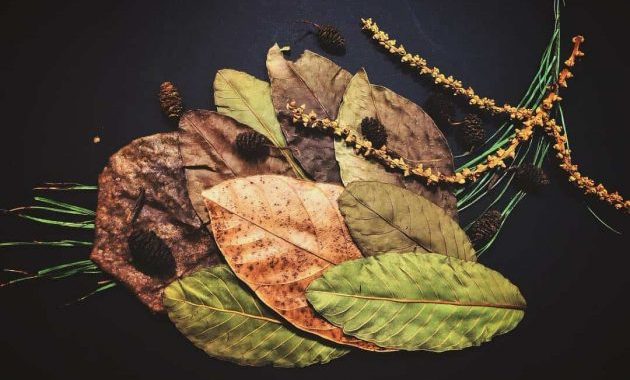
How many leaves or cones do I need to make blackwater? There is no specific answer about the dosing of leaves or cones. You do not have to worry about damaging the aquarium, and the dried leaf normally does not have toxic.
Commonly, the dried almond leaves are used at a rate of 2 leaves for 10 – 15 gallons of water. It may take around 1 – 2 days to absorb enough water to submerge. Replace the leaves between 30 – 60 days regularly.
Now, you can find “liquid blackwater additives” or “blackwater conditioner.” This product is available in online stores. It can help to rebalance water chemistry quickly after the water change.
This product is highly concentrated. A single capful can dose several gallons of water at a time. The blackwater liquid enhances the bioavailability of nutrients for aquarium plants.
Read Also: Grass For Freshwater Aquarium Lilaeopsis Brasiliensis or Called Micro Sword
Aquarium Live Plants For Blackwater
You must be selective in choosing tropical aquatic plants for your blackwater tank. The blackwater environment is actually extreme for some aquarium plants. Characteristics of them usually can be survived in medium to low-lighting and lower Co2 dissolved. Some hardy freshwater aquarium plants can live in the dark water tanks:
- Java moss
- Anubias Barteri Var Nana Wrinkle Leaf
- Anubias Gilletii
- Anubias Pynaertii
- Anubias Nana Pangolino
- Anubias Gigantea
- Anubias Lanceolata
- Anubias Frazeri
- Anubias Nana Golden
- Anubias Nana Petite
- Cryptocoryne
- Java fern
- Taxiphyllum Sp.
- Bucephalandra
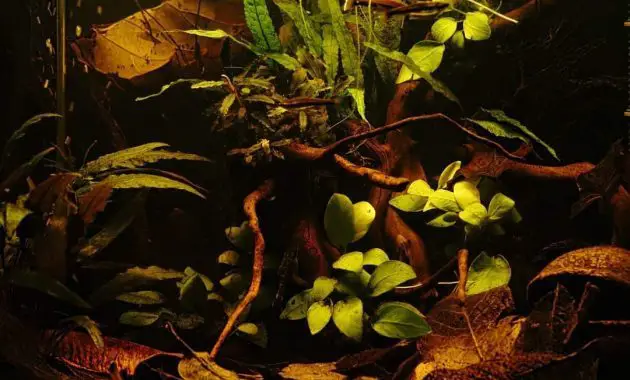
If you want to build a biotope blackwater tank, you do not need live aquatic plants. Because the biotope tank duplicates a fast-moving stream environment in which the plants commonly would grow there.
Using liquid fertilizer help, the plants grow better where the blackwater tank normally has less light and nutrients. Floating plants are always useful; you can add some to the tank to cover the light and become playing places for the fish for exploration.
Read Also: “Azolla Cristata” Is The Best Live Floating Plants For Betta Fish Tank
Freshwater Fish For Blackwater Tank
Many popular freshwater aquarium fish were native to blackwater environments. Then, most of them adapted to aquarium homes where has more alkaline water conditions. But, they are still live better in acidic water conditions.
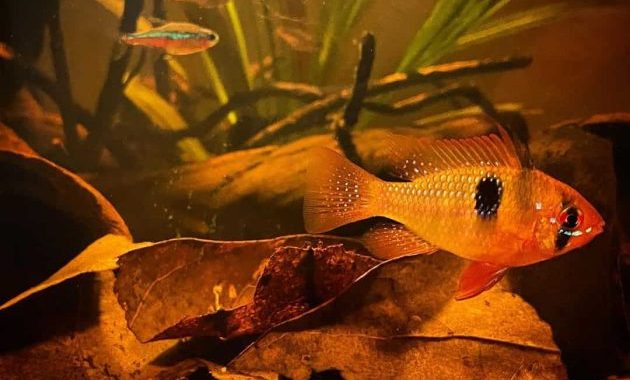
Invertebrates are the real challenge in the blackwater world. Almost all freshwater invertebrates have strong shells that formed from calcium carbonate and other minerals. While substances dissolved in a blackwater environment tend to melt at the minerals of their shells, they may kill the invertebrates over time.
Only a small species of shrimps and snails survive in blackwater conditions, including bee and bamboo shrimp and Malaysian trumpet snail.
Below are some freshwater fish species that can live better in blackwater tanks:
- Angelfish, Discus, Uarus
- Apistogramma, Blue Rams, Kribensis, and other dwarf cichlids species
- Pacus, Silver Dollars
- Corydoras, Kuhli Loaches, Otocinclus, Plecostomus, and other Catfish species
- Most Tetra species, especially Cardinal and Neon Tetras
- Chocolate Gourami, Samurai Gourami, Sparkling Gourami, Licorice Gourami, and Bettas
- Guppy
- Cherry Barbs, Chili Rasboras, and other small Cyprinids
- Red Tail Sharks, Glass Catfish, Dwarf Pufferfish
Fish And Invertebrates Should Be Avoided In Blackwater
- Swordtails, Molly, Platy, Danio, and another neutral – alkaline pH fish
- African Cichlids
- Most of the freshwater invertebrates
Hardscape For Blackwater Aquarium
Rocks and driftwood is the common hardscape that uses in blackwater tank. It will give a natural appearance in the tank when you arrange it in such away. Using any wood and roots aquarium that is safe for placing in the tank.
Some of the tank wood knowing can produce a tannin required in blackwater conditions, such as Manzanita wood. The rough rocks and fine stones can be used to build jagged outcropping or riverbeds. Be careful to select a rock; some of them can release carbonates (alkalinity) or water hardness (calcium) into the water and raising the pH level.

